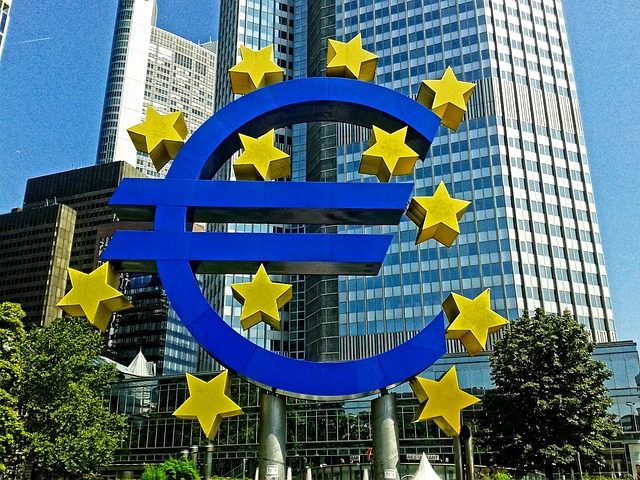ECB Governing Council meeting on Thursday was a currency war of words and inaction, where President Draghi has once again demonstrated his ability to bring forward the benefits of ECB activism. Although the ECB Governing Council refrained from changes in its monetary policy, the ensuing press conference had a decidedly dovish slant to it. Markets now see an increased chance of December action with Deposit rate cut back in the toolbox.
President Draghi in decidedly more proactive approach to policy at the October meeting, gave a clear statement of intent on potential near-term action. He suggested that more easing measures could be announced in December and mentioned a deposit rate cut as one of the tools at the ECB's disposal. Draghi even suggested that the Governing Council will want to be "vigilant" (a keyword in the past for imminent policy changes).
"We still think an increase in the monthly bond purchase volume is more likely than a simple extension of the programme beyond September 2016 or an isolated rate cut. The ECB can be expected to relax the monetary reins further in the near future, although this course is of little help to the real economy, mainly benefiting the finance ministers of highly indebted countries." notes Commerzbank in a research note to its clients.
Draghi reiterated that risks to the EA inflation outlook remain tilted to the downside and also promised more action if the convergence of the inflation path to the target is pushed back. Since ECBs' September macroeconomic forecasts, the euro has continued to appreciate (+9% since mid-April on a NEER basis) and EM risks have materially increased. The most recent euro area activity data also signaled some deceleration in growth in Q3, while inflation should remain well below the ECB target in 2016. This suggests that the December inflation forecasts will be crucial.
ECB-dated Eonia forward curve has further inverted after Mr Draghi's comments and according to Barclay's calculations, it is currently pricing in a probability of about 90% for a 10bp deposit rate cut by the June 2016 and about a 40% chance of a 10bp deposit rate cut at the December meeting. Before Thursday's meeting these likelihoods were at about 50% and 20% respectively.
Euro area October flash manufacturing PMIs showed mixed results, with Germany posting a lower-than-expected manufacturing PMI, in contrast with the improvements seen in France and EMU. The common currency is holding on to its marginal gains on the day, with muted reaction to data. The PMI's are not only the first glance at Q4, but also a chance to see: (1) to what degree weakness in external demand may be spilling over into domestic Euro area activity; and (2) any impact from VW ahead of Germany's IFO survey next week.
The prospect of new stimulus measures lifted European stocks, pan-European FTSEurofirst 300 index rose 1 percent, building on a 2.1 percent gain in the previous session, while the euro zone's blue-chip Euro STOXX 50 index advanced by 1.2 percent. The euro tumbled against the dollar, with the common currency down 2% to $1.1110, had recovered slightly to $1.1159 during the Asian session, but has resumed slide and is trading at $1.1113 at the time of writing ( 0954 GMT).
Outcome at ECB Dec meeting likely to be a combination of increase in QE and deposit rate cut

Friday, October 23, 2015 10:07 AM UTC
Editor's Picks
- Market Data
Most Popular



 New RBNZ Governor Anna Breman Aims to Restore Stability After Tumultuous Years
New RBNZ Governor Anna Breman Aims to Restore Stability After Tumultuous Years  RBA Reassesses Pricing Behaviors and Policy Impact Amid Inflation Pressures
RBA Reassesses Pricing Behaviors and Policy Impact Amid Inflation Pressures  India’s IT Sector Faces Sharp 2025 Valuation Reset as Mid-Caps Outshine Large Players
India’s IT Sector Faces Sharp 2025 Valuation Reset as Mid-Caps Outshine Large Players  U.S. Black Friday Online Spending Surges to $8.6 Billion, Boosted by Mobile Shoppers
U.S. Black Friday Online Spending Surges to $8.6 Billion, Boosted by Mobile Shoppers  Morgan Stanley Boosts Nvidia and Broadcom Targets as AI Demand Surges
Morgan Stanley Boosts Nvidia and Broadcom Targets as AI Demand Surges  Brazil Central Bank Plans $2 Billion Dollar Auctions to Support FX Liquidity
Brazil Central Bank Plans $2 Billion Dollar Auctions to Support FX Liquidity  Ethereum Bulls Reload: $175M ETF Inflows + Super-Whale Grabs $54M ETH as Price Coils for the Next Big Move
Ethereum Bulls Reload: $175M ETF Inflows + Super-Whale Grabs $54M ETH as Price Coils for the Next Big Move  BOJ Governor Ueda Meets Key Ministers as Markets Eye Policy Shifts Under New Leadership
BOJ Governor Ueda Meets Key Ministers as Markets Eye Policy Shifts Under New Leadership  BOK Expected to Hold Rates at 2.50% as Housing and Currency Pressures Persist
BOK Expected to Hold Rates at 2.50% as Housing and Currency Pressures Persist 



























